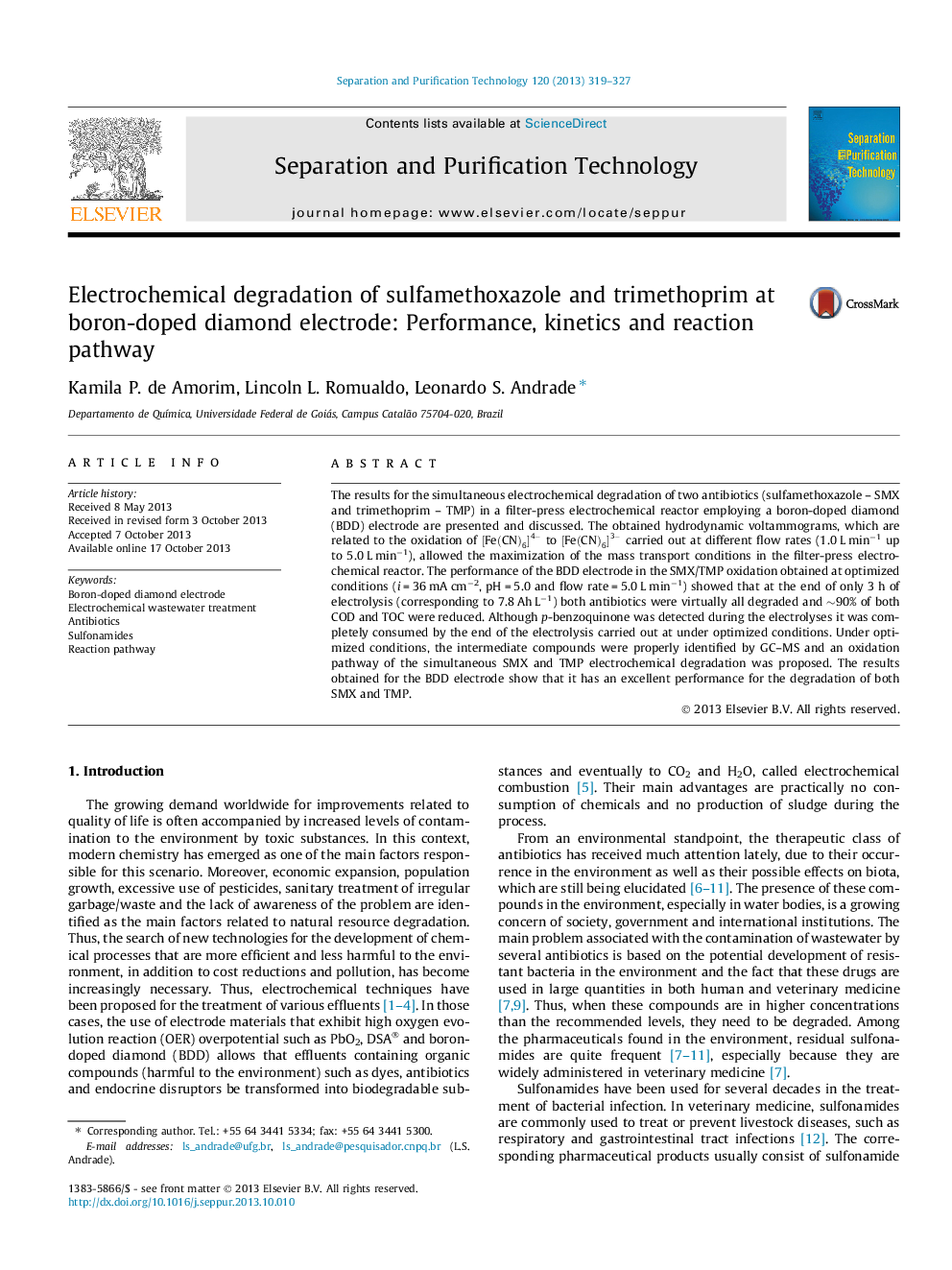| Article ID | Journal | Published Year | Pages | File Type |
|---|---|---|---|---|
| 641282 | Separation and Purification Technology | 2013 | 9 Pages |
•First order decays were observed for electrolyses carried when iappl > ilim.•The degradation rates of SMX and TMP were favored at acidic conditions.•At optimized conditions both antibiotics were virtually all mineralized.•An oxidation pathway of the SMX/TMP electrochemical degradation was proposed.•Boron-doped diamond electrode is quite efficient for the degradation of both SMX/TMP.
The results for the simultaneous electrochemical degradation of two antibiotics (sulfamethoxazole – SMX and trimethoprim – TMP) in a filter-press electrochemical reactor employing a boron-doped diamond (BDD) electrode are presented and discussed. The obtained hydrodynamic voltammograms, which are related to the oxidation of [Fe(CN)6]4-[Fe(CN)6]4- to [Fe(CN)6]3-[Fe(CN)6]3- carried out at different flow rates (1.0 L min−1 up to 5.0 L min−1), allowed the maximization of the mass transport conditions in the filter-press electrochemical reactor. The performance of the BDD electrode in the SMX/TMP oxidation obtained at optimized conditions (i = 36 mA cm−2, pH = 5.0 and flow rate = 5.0 L min−1) showed that at the end of only 3 h of electrolysis (corresponding to 7.8 Ah L−1) both antibiotics were virtually all degraded and ∼90% of both COD and TOC were reduced. Although p-benzoquinone was detected during the electrolyses it was completely consumed by the end of the electrolysis carried out at under optimized conditions. Under optimized conditions, the intermediate compounds were properly identified by GC–MS and an oxidation pathway of the simultaneous SMX and TMP electrochemical degradation was proposed. The results obtained for the BDD electrode show that it has an excellent performance for the degradation of both SMX and TMP.
